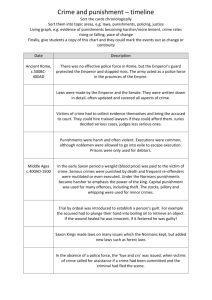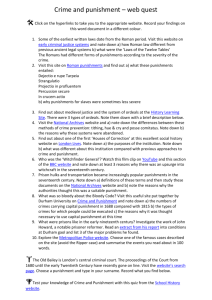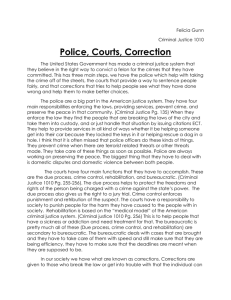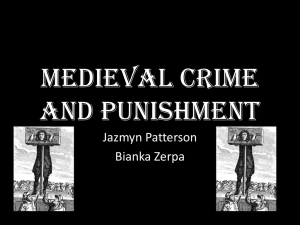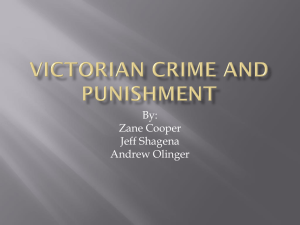Timeline, card sort
advertisement
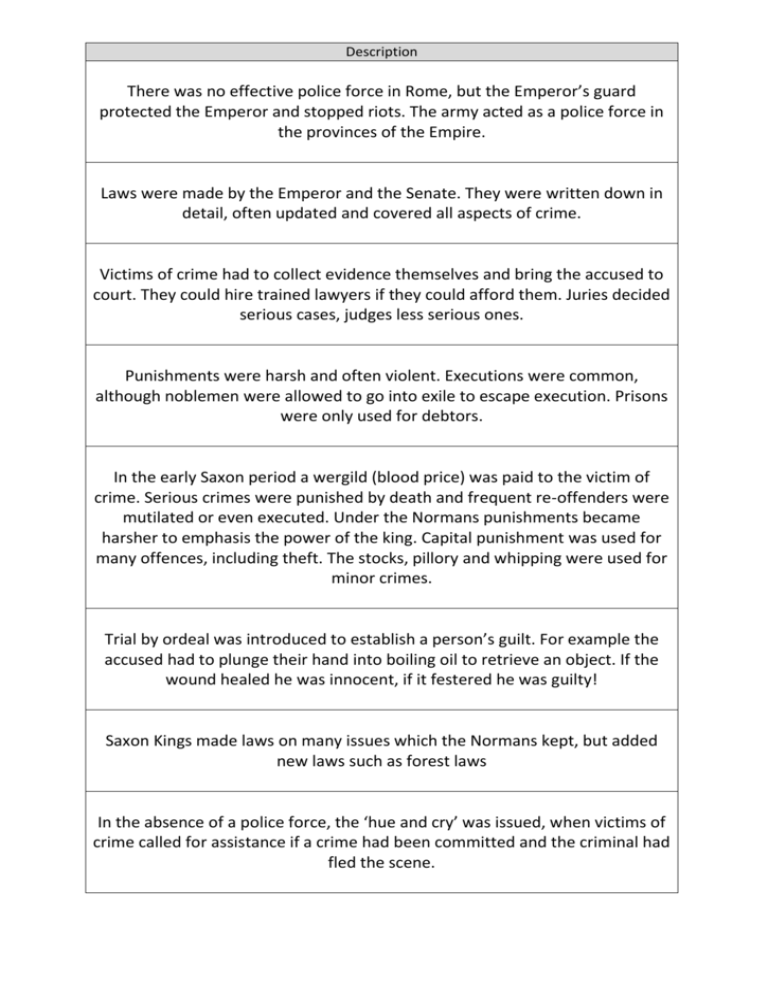
Description There was no effective police force in Rome, but the Emperor’s guard protected the Emperor and stopped riots. The army acted as a police force in the provinces of the Empire. Laws were made by the Emperor and the Senate. They were written down in detail, often updated and covered all aspects of crime. Victims of crime had to collect evidence themselves and bring the accused to court. They could hire trained lawyers if they could afford them. Juries decided serious cases, judges less serious ones. Punishments were harsh and often violent. Executions were common, although noblemen were allowed to go into exile to escape execution. Prisons were only used for debtors. In the early Saxon period a wergild (blood price) was paid to the victim of crime. Serious crimes were punished by death and frequent re-offenders were mutilated or even executed. Under the Normans punishments became harsher to emphasis the power of the king. Capital punishment was used for many offences, including theft. The stocks, pillory and whipping were used for minor crimes. Trial by ordeal was introduced to establish a person’s guilt. For example the accused had to plunge their hand into boiling oil to retrieve an object. If the wound healed he was innocent, if it festered he was guilty! Saxon Kings made laws on many issues which the Normans kept, but added new laws such as forest laws In the absence of a police force, the ‘hue and cry’ was issued, when victims of crime called for assistance if a crime had been committed and the criminal had fled the scene. Many towns built Houses of Correction to punish and reform offenders. For example in the late 1500s Bridewell was set up in London, where vagrants, unmarried mothers and runaway apprentices were sent. They were whipped and set to hard work. Transportation was introduced. From the 1660s criminals were sent to the American colonies Laws were still made by the King or Queen, but increasingly they had to do so with the involvement of parliament. Under the Tudors new laws were introduced which included heavy fines for not attending church. Catholic priests were accused of treason for trying to convert people to their faith. There was still no regular police force in the country, so the Hue and cry was still used to catch criminals. Thief catchers appear in the 1700s, who earned their living from the rewards they received for bringing criminals to justice. Vagrancy was thought to be a growing problem and punishments grew more severe. Vagrants were frequently whipped and sent home. The Bloody Code was gradually introduced over this period, and the number of offences punishable by execution rose considerably due to a perception that crime was on the increase. Horse-thieves and counterfeiters were just as likely to go to the gallows as cold-blooded murderers. There were a variety of courts. Royal judges visited countries to hear serious cases at assizes. Justices of the Peace help sessions every 3 months and manor courts dealt with local or minor crimes The Habeas Corpus Act (meaning ‘you have the body’) was passed by Parliament, stopping authorities from keeping people in prison without being charged. There was an increasingly wide range of laws. As governments became more involved in every aspect of society, they made new criminal offences which had not existed before, e.g. in 1870 it became compulsory to send children to school. Parents were fined for not doing so. The old system of unpaid constables was replaced by professional police forces. By 1860 forces had been set up throughout the country. Detective forces followed. The system of trials was little changed from early modern times The Bloody Code was abolished. Capital punishment was little used by 1900. The only crimes punished by execution were murder and treason. The main purpose of punishment was to punish and reform the criminal, not to warn others away from crime. Therefore, punishments no longer took place in public. Physical punishments such as whipping were abolished except in prisons. Fines were a common punishment. Prison became the main form of punishment with 90% of serious offenders sent to prison. Transportation was seen as a middle punishment between execution and fines until prisons took over. Transportation ended in 1868. Sir Robert Peel set up the first police force in 1929. It served London but by 1856 forces had been set up nationwide Capital punishment was abolished in 1965 Reforms of prisons were introduced. In 1907 probation was introduced. Offenders had to report to a police officer regularly to avoid a prison sentence. In 1967 parole was introduced, where prisoners could be let out early for good behaviour. In the 1990s electronic tagging of offenders was introduced. In 1908 an age of criminal responsibility was introduced, when a child could be held responsible for his/her crime for the first time. It was set at seven then raised until by 1969 it stood at fourteen In the 1990s the government introduced a new measure for dealing with antisocial behaviour called ASBOs. These are now to be replaced with communitybased control measures nicknamed ‘CRIMBOs’ placing more power into the hands of local residents in dealing with anti-social behaviour. In 1901 the existence of blood groups was discovered and the first national register of finger prints was set up. Methods of crime detection have improved significantly with the development of forensics and DNA analysis. Specialist crime squads have been formed to tackle new forms of criminal activity. In 1919 the Flying Squad was formed to tackle serious armed crime. 1971 the Anti-Terrorist Squad was formed. In 2008 the Police National E-Crime Unit was formed with powers to investigate computer-based criminal activity. Community service introduced for minor offences Recent statistics show that over 70% of criminals reoffend once they leave prison. 636 murders committed in 2012, compared with 312 in 1900.
